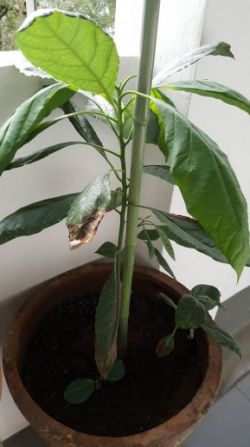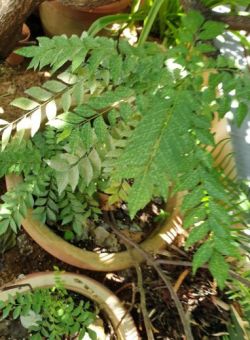Gardening FAQ #22 – What You Need To Know
In this article, we share In this article, we share what is causing white spot and how to solve it, what avocado plant needs and much more. Let’s go through the common gardening FAQ, problems and solutions you need when growing your plants either indoor and outdoor.
AVOCADO PLANT NEEDS MORE SUNLIGHT TO THRIVE – a common question in gardening FAQ
 What is wrong with my avocado plant? Its leaves are drying up. Is this due to disease or other problems? How can I keep my plant healthy in dry climate?
What is wrong with my avocado plant? Its leaves are drying up. Is this due to disease or other problems? How can I keep my plant healthy in dry climate?
The avocado plant can be adapted to grow under outdoor sunny conditions.
It appears that your plant may not be receiving sufficient sunlight at the apartment balcony or corridor. The leaves look thin and floppy.
Under lower than optimal light conditions, leaves are prone to damage, making them susceptible to disease. You may want to prune the diseased leaves and try to elevate your plant so it can get more sunlight.
Or you may want to put this under a grow light first to nurse it back to health before putting it out to the final location. You can read up my post on growing lights fixture where I show you the top 4 things you need to know.
Below is a great video guide on this procedure on how to successfully find the male and female pumpkin flowers and then carefully transfer pollen from the male flower to the female flower. After this successful pollination, you can then see the baby pumpkins grow to full size.
WHITE SPOTS ON CURRY LEAF PLANT DUE TO PESTS
 My curry leaf plant has white spots. What is wrong with it and what can I do to bring it back to health?
My curry leaf plant has white spots. What is wrong with it and what can I do to bring it back to health?
Your curry leaf plant is infested by a pest called citrus Hindu mite, which is very small and not visible to the naked eye. Also, note that this pest also infests citrus species, which belong to the same plant family (Rutaceae).
These mites suck sap and cause the rather uniform silver mottling on affected leaves, which will not recover even after treatment.
Prune heavily infested portions of the plant and perform routine spraying of environment-friendly pesticides, such as summer oil or neem oil.
These methods may help to provide some control of the pest population.